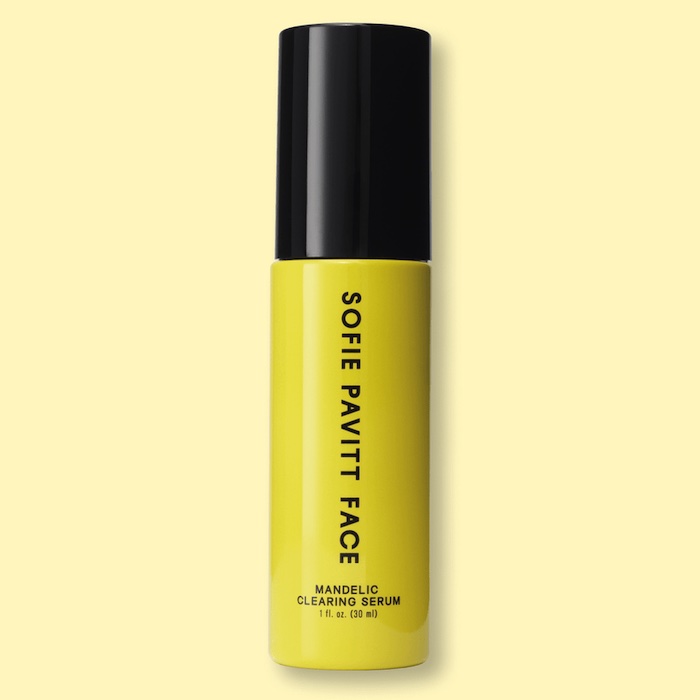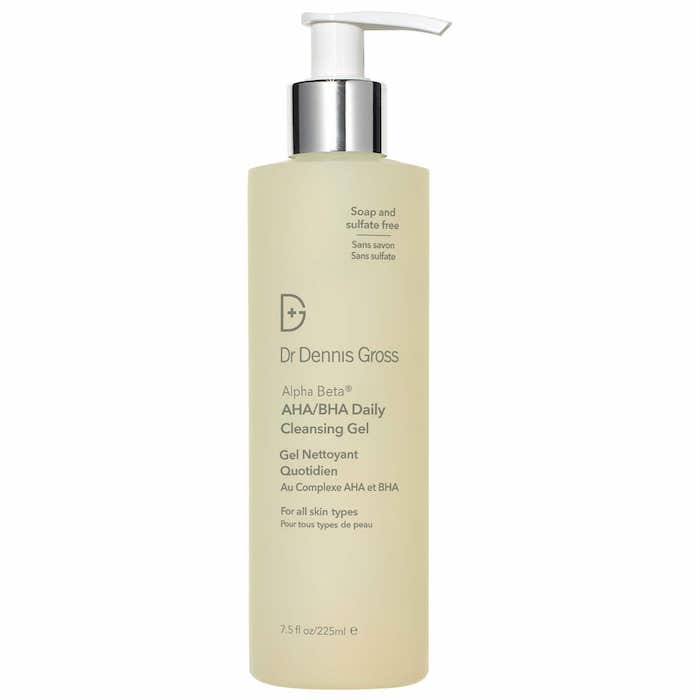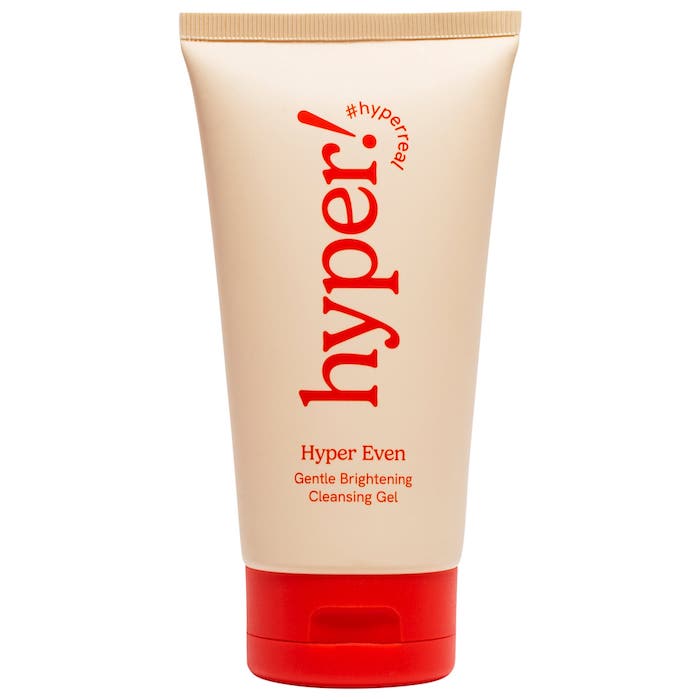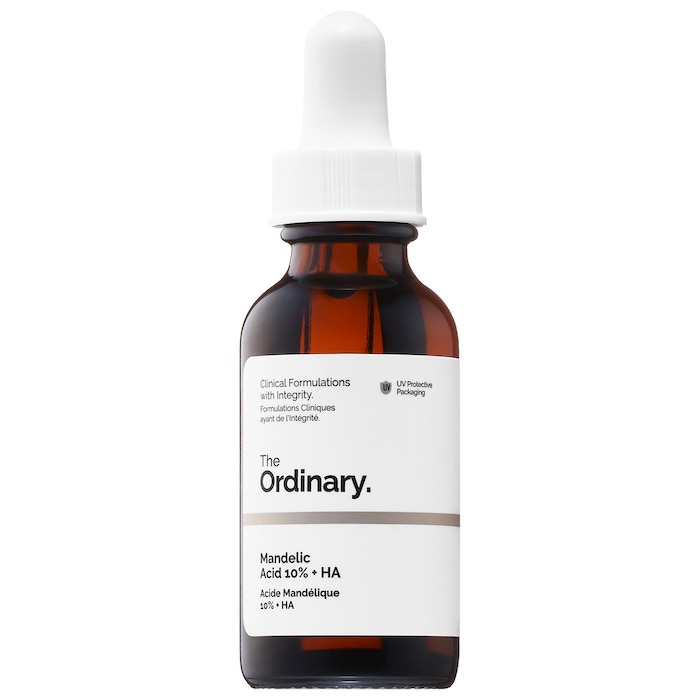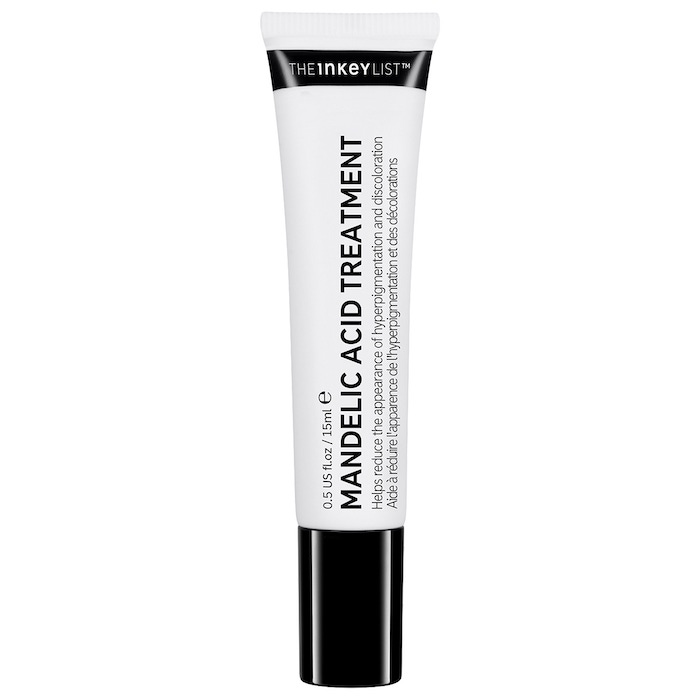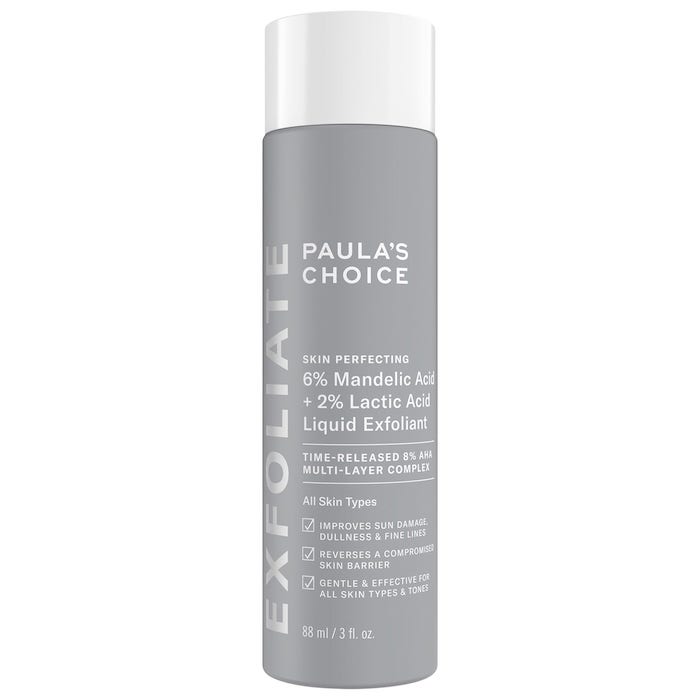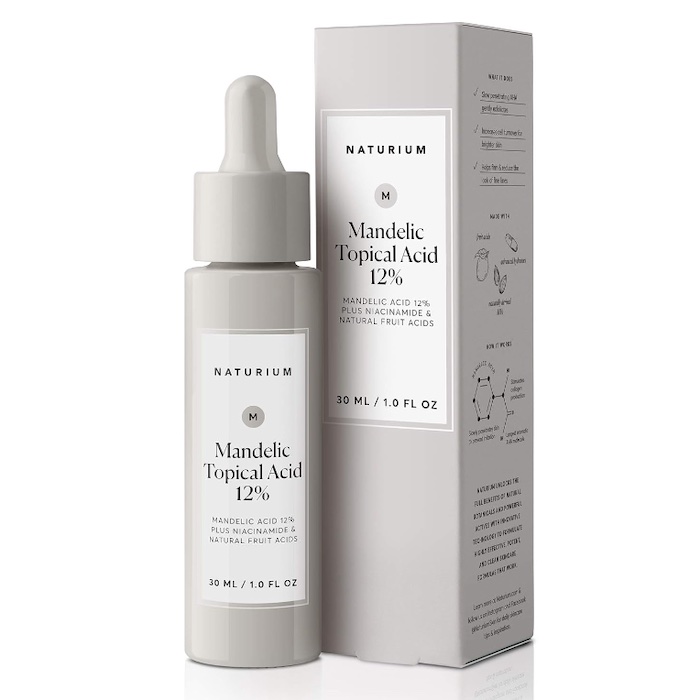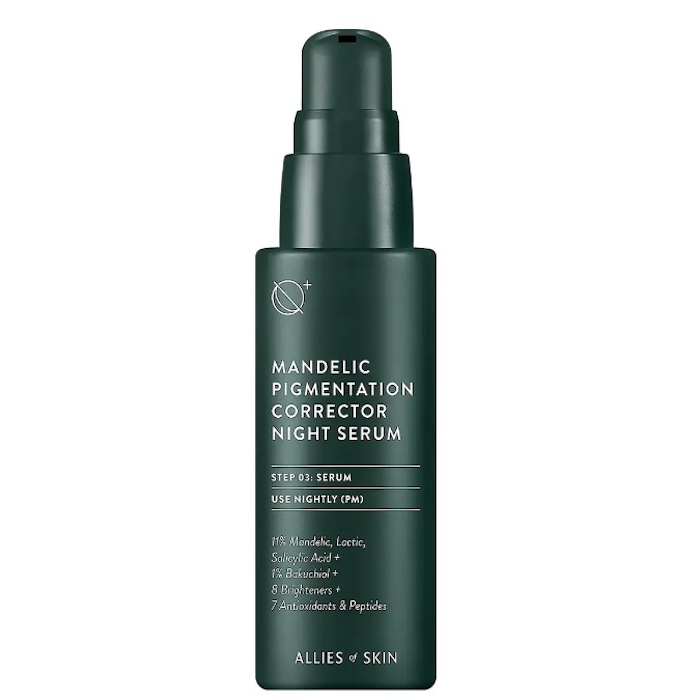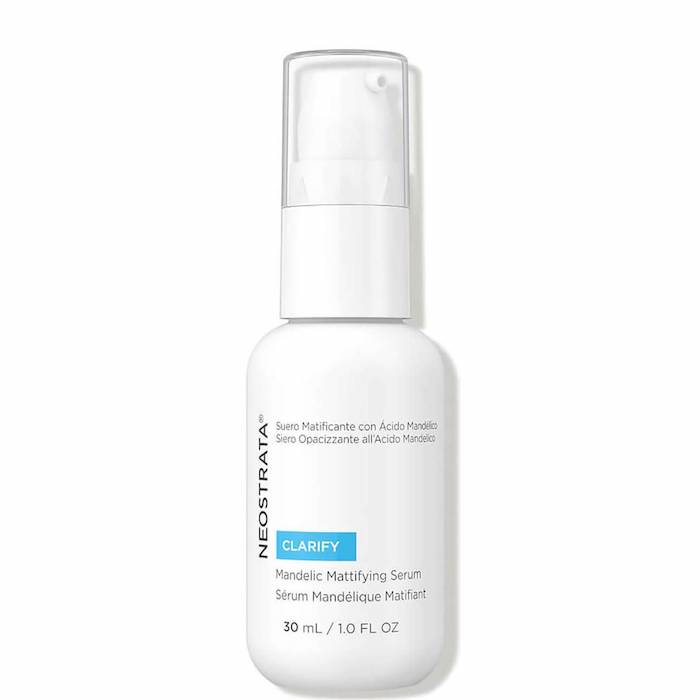Mandelic Acid Is the Key to Clearing Acne-Prone Skin (Without Extra Irritation)

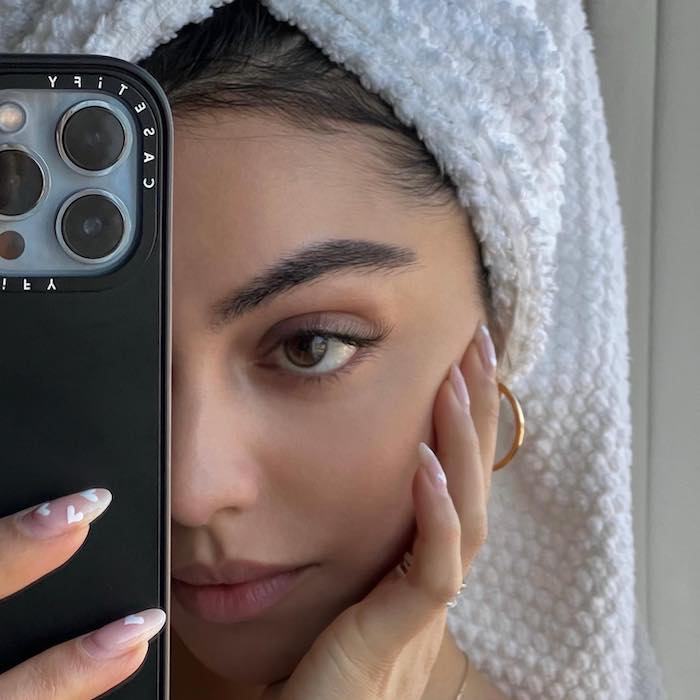
Anyone who struggles with acne (or any other skin concern for that matter), knows that if anyone is claiming a skincare product is a "miracle" or "works for everyone," it's probably too good to be true. That's because everyone's skin is different—even if they're struggling with the same concern.
That's especially true for acne. Take two people who experience breakouts and one of them may respond better to certain treatments. One may tolerate active ingredients better. One may have a lower irritation threshold and thus require more soothing ingredients in their skincare products. You get the idea.
That's why it can be helpful to talk about ingredients rather than products. After all, certain ingredients have a long-studied, well-demonstrated, and expert-backed track record when it comes to treating and preventing breakouts. And mandelic acid is one of them.
Even though it may not be as splashy as other exfoliating acids, some skincare experts prefer it above all others—including glycolic, lactic, and salicylic acids. Why? It's simple. It's gentle and has a lower risk of causing dryness and irritation. Yet, it's still highly effective at clearing the skin. Ahead, learn everything you need to know about this superstar ingredient from a top dermatologist and esthetician.
What Is Mandelic Acid and How Does it Benefit the Skin?
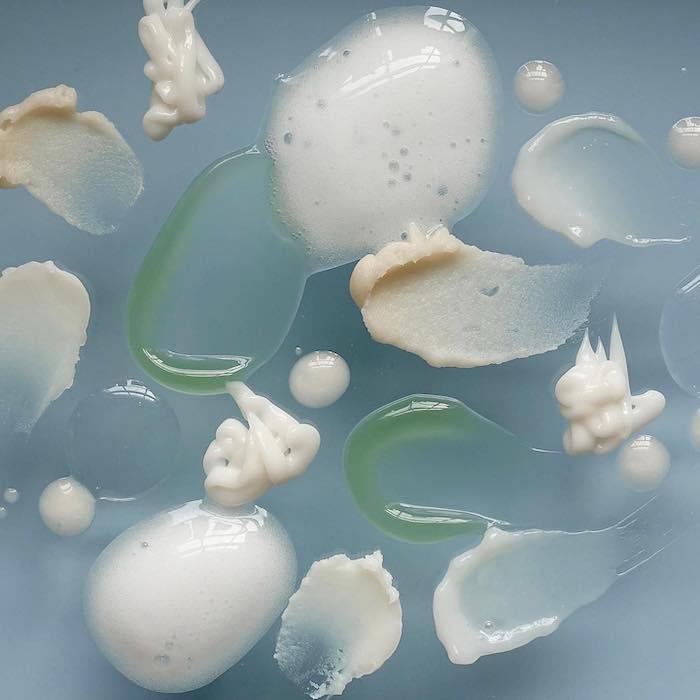
Brendan Camp is a board-certified dermatologist at MDCS Dermatology. He says mandelic acid is an alpha-hydroxy acid—the category of exfoliating acids that also includes glycolic and lactic acids (salicylic is a beta-hydroxy acid). "While mandelic acid
can be derived from bitter almonds, the mandelic acid used in skincare products is generally synthetic," he says.
Just like most other skincare acids, the main function of mandelic acid is to exfoliate the skin. "Mandelic acts as a gentle exfoliator," Camp says. "Because of its larger molecular weight, mandelic acid does not penetrate deeply. It is therefore considered a gentle exfoliant suitable for those with sensitive or acne-prone skin."
Sofie Pavitt is a skin expert, esthetician, and founder of the eponymous (and sought-after) skin studio in NYC. She reiterates that what sets mandelic acid apart is its large molecular size. "Mandelic acid is a large molecule size AHA that dissolves the bonds between dead skin and healthy skin underneath. The large molecule size means it is not going to cause irritation. It's a low and slow treatment which is perfect for sensitive skin. It’s also brightening and antibacterial, so it’s really giving you a lot for one ingredient."
What Makes It So Effective at Clearing Acne?

While mandelic acid can benefit myriad skin types, it's especially recommended for those who struggle with breakouts and irritation. "As an exfoliant, mandelic acid can prevent the formation of clogged pores, which can otherwise contribute to the formation of an incipient acne lesion," Camp says. "Because it is more gentle, mandelic acid may be better tolerated than other potentially harsh acne ingredients, like salicylic acid or retinol."
That's why Pavitt recommends mandelic acid to all of her acne-prone clients. "My philosophy is that I want my clients to be exfoliating daily to really help nudge those dead cells out of the way to prevent build-up and breakouts," she says. "Lactic and glycolic [acids] are too strong to use daily. That's why I love this large molecule size of mandelic. … I also like combining it with other actives. She plays well with other ingredients such as benzoyl peroxide, retinols, and low-percentage salicylic acids or willow bark BHAs."
How Often Should Mandelic Acid Be Used?
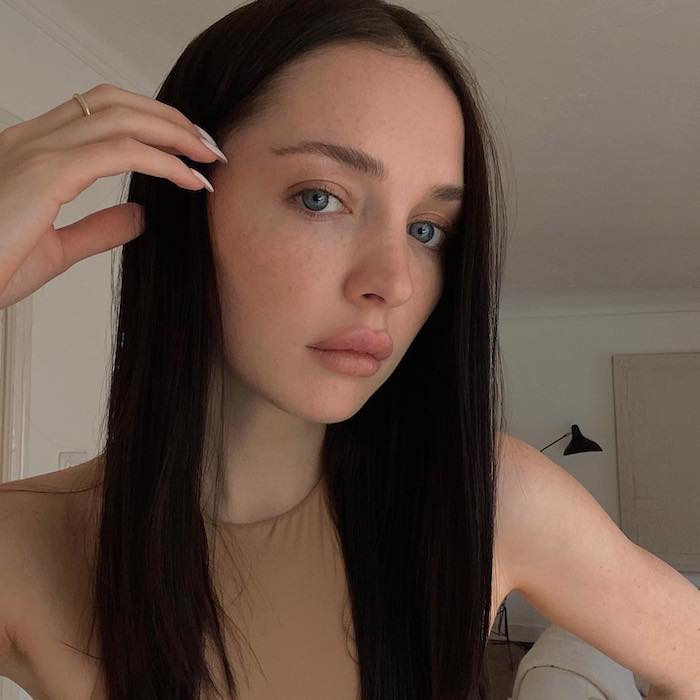
A general rule of thumb is to use an exfoliant two to three times a week," Camp says. "You may want to use it less often if you have a history of
particularly sensitive skin." He notes that overuse of exfoliators can cause redness, dryness, and irritation, so it's best to start slow. Also, there's the matter of sun protection. "Exfoliants can make skin more sun sensitive, so it is important to use an SPF moisturizer."
Pavitt, on the other hand, operates on a philosophy of daily (but gentle) exfoliation. She recommends starting by using mandelic acid every other day and then amping it up to once per day. "This is the perfect acid for irritated, breakout-prone skin or even someone with super sensitivity," she says. "The only thing I recommend is to isolate your actives within your routine. Don't have four or five exfoliators in place with retinol, vitamin C, etc.; this is the only time I see people getting irritated when using mandelic acid (they're using too many actives)."
To avoid going overboard, Pavitt recommends sticking to the essentials. "I recommend starting with a gentle non-active cleanser, followed by a mandelic clearing serum, a noncomedogenic moisturizer, and SPF if you're using it in the daytime." Oh, and if you're not sure whether or not you're using the right products, she has your back. "Use my pore-clogging ingredients checker at sofiepavittface.com," she says. "You can input a product's ingredient list into this search engine and it will tell you if that product has any pore-clogging/comedogenic ingredients in it."
Shop Mandelic Acid Skincare Products

Camp's final recommendation is this skincare product… for your scalp. "Intended as an overnight detox treatment for your scalp, this serum contains ingredients like mandelic acid to remove debris, oil, and dirt for a cleaner, healthier scalp," he says.
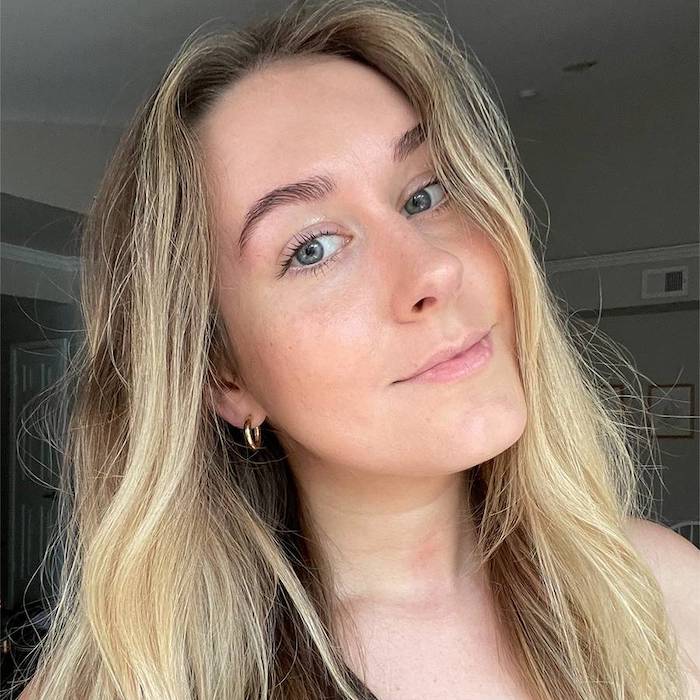
Kaitlyn McLintock is a Beauty Editor atBest Knockoff Luxury Clothing . She has 10 years of experience in the editorial industry, having previously written for other industry-leading publications, like Byrdie, InStyle, The Zoe Report, Bustle, and others. She covers all things beauty and wellness-related, but she has a special passion for creating skincare content (whether that's writing about an innovative in-office treatment, researching the benefits of a certain ingredient, or testing Wholesale Replica Bag and greatest at-home skin device). Having lived in Los Angeles, California, and Austin, Texas, she has since relocated back to her home state, Michigan. When she's not writing, researching, or testing beauty products, she's working through an ever-growing book collection or swimming in the Great Lakes.
